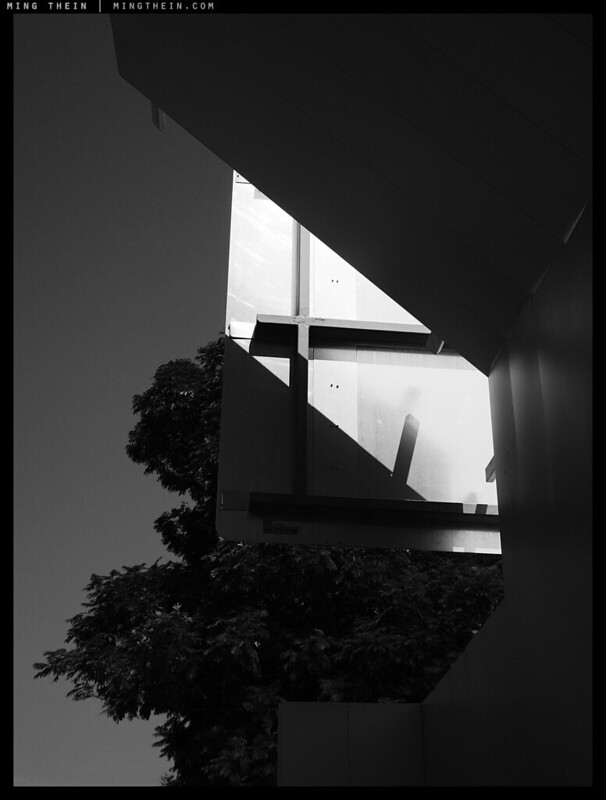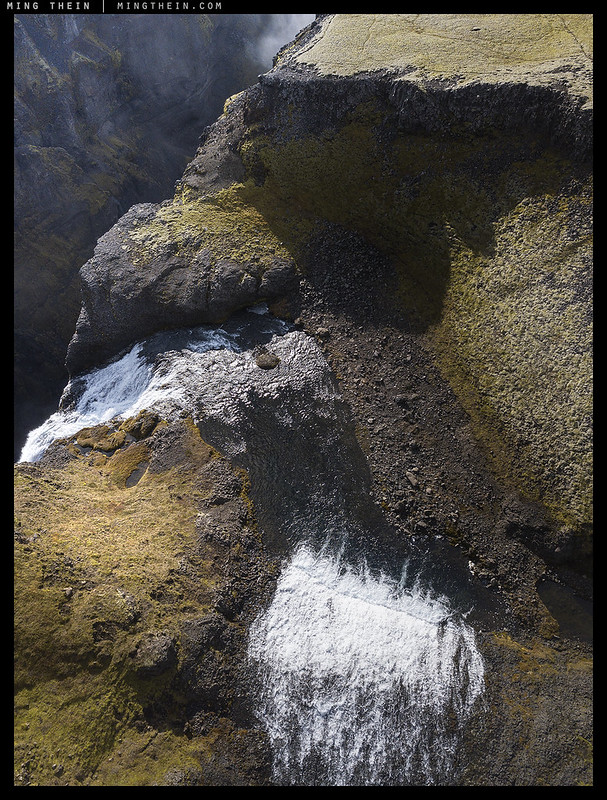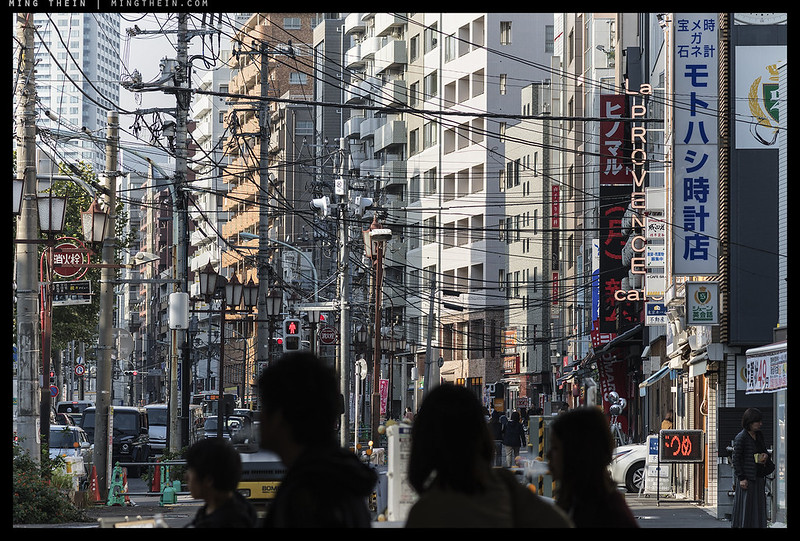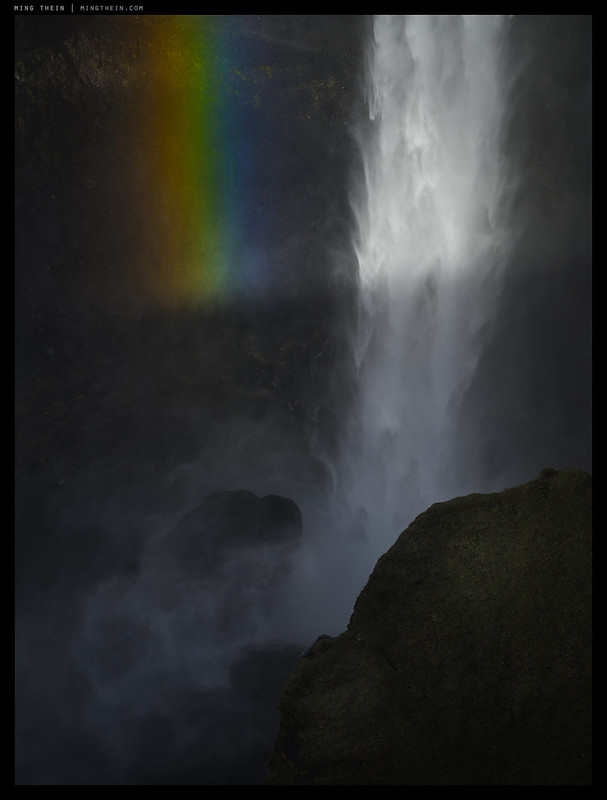
In the better part of 17 years’ worth of shooting – there are just a few critical things I find are inescapable when taking the shot. I perhaps have the benefit of having gone full circle a couple of times around the effort and equipment wheel, and shifting priorities force me to work both faster and smarter. Please note that the descriptions following have some subtlety and may at first seem contradictory, but bear with me…

Know why you are shooting
Even if you are flavouring with no definite image in mind – you’re still going out with a camera and a purpose. The aim here would be to observe, note things that are different or exceptional and record them. This leads to a sort of mental curation and observation before even turning the camera on; you’re already pre-selecting and evaluating the scene in your subconscious before attempting to isolate and record it. There is purpose, and that purpose guides consistency.
Practice
Photography is a complex process. Translating an idea to an image is an even more complex one that requires both conceptual translation from one set of ‘language‘ (abstract, thought, perhaps written or logical) to another (visual). It requires understanding of both languages and the technical chops to translate them, plus the post processing skills to present them. It is impossible to get things 100% right on your very first try. Experience helps somewhat, but at that level it’s also an iterative process: the more you refine and experiment, the more additional ideas are generated, and the layers build – leading to a better image.

(The right) light
It isn’t always directional, it isn’t always strong, it isn’t always continuous spectrum. I have made images I’m satisfied with in flat light, mono spectral light, very hard noon light and all sorts of strange combinations. Perhaps the statement should be slightly different: master your light. Whether you’re choosing it (i.e. deciding when to shoot and where to place your subject in available light) or making it entirely from scratch in the studio, you need to have the right light to convey your idea – and if you’re not sure if the light you’ve got creates the right mood, go back to square one and ask yourself what that mood should be. Color temperature matters more than you think because it influences a lot of subconscious emotional responses, too.
Equipment that you like, and that is fit for purpose
I’m going to get this out of the way upfront once and for all: there is no ‘best’. There is most suitable for purpose, and clearly not suitable for purpose, and a whole spectrum of options in between. It is important that whatever you choose does not get in the way of the image making process, that it enables you to get the shot you want and present it in the way you want (i.e. fast enough, high quality enough). However, more important is that you enjoy using it (especially if you are an amateur) – because you’re more likely to make an image and therefore more likely to make a good image; moreover you’re also likely to overlook or work around any shortcomings. Good hardware (notice I didn’t say camera) should be intuitive to use. Lastly, and this might sound stupid, but make up your own mind. Get whatever preliminary information you want online, but remember that a) everybody has an opinion and b) the opinion is only as useful as the perspective of the opinion-giver is similar to yours. Once you’ve found what you like – stop reading online and go out and make pictures.

Understand how human vision works
This is true both physiologically and psychologically. As image makers, we need to know what our (presumably human) audience is programmed to respond to and consciously use it so that they respond to our work in the way we intend. We need to understand how our eyes work such that we can make our equipment faithfully do our bidding; both to reproduce what we see as well as what we imagine (and can’t see).
(Some of the time) a clear idea of your final image output
When you’re creating an image from scratch – arrangement of physical subject, light, camera perspective etc – it’s important to have your output in mind whilst creating it. This not just avoids time wasted dithering but also helps to sharpen the visual execution: you don’t select the wrong elements, you exclude the ones you deem distracting, you notice the details. You think about what will be noticeable at the size and medium presented, and compose accordingly – and the end result is conceptually precise. You won’t go back and look at it later wondering why you left that distracting thing on the table in the background…

(The rest of the time) an open mind with no expectations
When you’re observing and recording – then your mind has to be reactive rather than proactive in case you land up missing something exceptional due to tunnel vision. That scope of observation should narrow accordingly with your intention – if your brief is to document a specific event, then you probably don’t want to be distracted from that by something totally unrelated unless it really is truly exceptional, especially if time is limited. But if you’re visiting a new place for the first time – let the scene deliver its impressions on you, and react instinctively. Curation can always come after you’ve left and had some time to digest.
Strong and consistent curation
What your audience sees is 100% limited by what you choose to show them: yet many people share and promote substandard images. Why? To be seen as a good photographer, just don’t show poor images; worse still, don’t show inseparable images of the same subject or theme. Multiple images are not memorable unless they are tangibly different; conceptually different images as part of a series should not be so different stylistically as to be jarring (but if every one is completely different but the subject is recognisably the same, that’s okay, because it’s another type of style and there’s something consistent linking the images – got it?). In short: if the key essence of the idea is distilled in one image, show that image, and show the best one – both conceptually, compositionally and technically. Why make excuses or settle for less when you don’t have to?

Good workflow from start to finish
I use the term ‘workflow’ in the broadest possible sense: everything from previsualisation of the intended result at the time of capture, to shot discipline, to color calibration and consistency of post processing, to backup to print and display. If you have to rethink your approach every time you work on an image – you’re going to waste a lot of time figuring out the same things again and again, and worse, if there’s a sequence of images, the differences will draw more audience attention than the images themselves. This becomes even more problematic on large projects that have images from different light conditions, different hardware or even over a wide span of time; I can think of several very high profile sets of work where the differences are obvious (and unfortunately, jarring). Have a system, preferably a versatile one, and stick to it: this ensures that you have the toolkit to reach the output you want.
Know your audience
Rephrased: know who you are making images for, and thus whose opinion matters, and to hell with the rest. If you are making images for yourself, then the only thing that matters is whether you are happy (unless you value self-worth by social media popularity, but I wouldn’t recommend this). If you’re shooting for a client, then the client needs to be happy first and then only you second. Sometimes you’re lucky enough on a paid job that these two objectives are one and the same, but it’s rare. Knowing who you need to please greatly simplifies both capture and especially curation.
Practice
And here we have come full circle: once all of these concepts make sense, go out and shoot some more until you don’t have to think about anything but the idea, as simple or complex as it may be; the rest should be done at an instinctive level. The images illustrating this post were a deliberate mix of observation and creation; technical execution and spontaneity; quick grabs and deliberation. But in all cases: I knew why I was shooting, and what I wanted to get out of the scene. I made the images I saw. MT
__________________
Visit the Teaching Store to up your photographic game – including workshop videos, and the individual Email School of Photography. You can also support the site by purchasing from B&H and Amazon – thanks!
We are also on Facebook and there is a curated reader Flickr pool.
Images and content copyright Ming Thein | mingthein.com 2012 onwards unless otherwise stated. All rights reserved





Love for and of one’s subjects – animate and inanimate.
Good point – without that, why bother shooting at all? (Ignoring the elephant in the room that is commercial, of course…)
Of all the good advice I think this one is the most important: “Once you’ve found what you like – stop reading online and go out and make pictures.”
So, bye bye then. 😉
I see each of these “Things” as paths of growth as a photographer. Here is where I am in my fourth year of this journey:
1. Still working on this
2. No problem here. I enjoy shooting
3. I have arrived. I was rained out on a trip to Mexico for two days, kept shooting. I have keepers, many. Wouldn’t have thought this unless forced to shoot. I am not a professional.
4. Escaped this challenge early on. My hand are huge. Nothing fits except large bodies. Took me two full years to understand this
5. Definitely still working on this
6. Help. I’m weak here. Rarely
7. I’m a natural
8. 90th percentile
10. Disaster
11. Easy. Me, me, me.
12. Practice. I shoot canon, Nikon, Fuji. I don’t have automaticity for the last two, while I sometimes need to warm up with my canon because I have shot it in months. Hmm
Thank you for a real keeper.
Pleasure!
Reading your blog is comforting because there seems to be a community of photographers here – not just gear heads. It is also stimulating because you bring up ideas that provoke reflection. I hope you have a great new year.
Happy holidays to you too! I’ve always tried to focus on the images, the making of, the reading/seeing of; most people only seem to remember the reviews. Oh well, can’t cure select memory 😛
Thank you for your great insight. Have a Happy holiday season. Keep up the great work.
Thanks, happy holidays to you too!
Ming, thanks for this great Christmas present! I shall refer to it when giving advice to novel photographers. I know there is an implicit thing in your text and that is emotion (together with qualities associated with art) but these could be part of a “most important things in art” separate post.
Now, time to forward the link to my photographer friends…
That’s a much longer discourse for another post 🙂
…and likely controversial. Happy Holidays!
Almost certainly! 😉
Thank you for this great post Ming. Your posts, and photos, are always interesting an thought provoking. A very Merry Christmas and Happy New Year to you and your family.
All the best to you too!
As with all skills: Practice, Practice, Practice and Practice some more. We never stop learning.
Congratulations and thank you for your fine blog.
Merry Christmas & Happy New Year!
Thanks, same to you!
I agree with the practice here and in Ming’s usual excellent article. I think that most people practice (and repeat mistakes without growth) because they buy more and more expensive equipment instead of buying education (Books, videos, workshops and so on) and getting critiqued by a master. Certainly, Ming’s posts provide incredible value if studied carefully rather than quickly read on a phone. On the other hand, excessive “learning” with little practice also leads to no growth. I have gotten much value from this blog and Ming’s videos and especially the workflow with dodging and burning which brought the best to my processing. Merry Christmas to Ming and his family and to all!
A balance of both is the way to go if you want to improve your images 🙂 Though the statistics seem to say that most people come once or twice for a review, then never come back after they realise there are a lot of other factors contributing to getting the result you want out of it (or go somewhere else that conveniently ignores all of that and offers hope in exchange for cash and the latest and greatest)…hmmm
You reach and touch so many people, Ming! In a good, creative and meaningful manner! May life continue to fascinate you! Merry Christmas and Happy New Year!
Thanks, same to you!
Very sound advice – and that’s something we ALL need! Thanks for sharing this,Ming.
My pleasure!
Ming, It’s great to read this article. Wish you Merry Christmas and a happy New year!
Thai from Taipei
Thanks, you too!
A fine summing-up of many of your articles, Thanks Ming!
And a good base for next year’s photography as a Christmas gift – so with time to digest before making New Year photo promises…
Merry Christmas, Ming!
And a happy New (photo) Year!
Best of the season to you too, Kristian!
The insights and concepts you discuss in this article are profoundly thought provoking. Thanks for sharing the lessons you e learned along the way.
Pleasure!
Ming : I really appreciate this article man . Where are you from ? Another Universe it seems . Most people doing social media photography writing are just …..dont know what to say . One famous one is a Website Vendor , one is a Lens mechanic …..I mean none of them have ever created a great image .
Creating great images is a totally different world from the world of equipment feature geeks freaking out over features that you may never need or need one in fifty thousand shots .
Thank you so much for being our North Star .
People like you , in any field are a fast disappearing species . I m gald that I found you and got connected .
Please keep this good work . Good Luck & you have our support .
Lets see if we can purchase your tutorials .
With deep regards
abhijeet ( Buddha in Black ) from New Delhi , India
Thanks, I’m from Malaysia. I make images for a living, I’m not a social media photographer – most of them are just equipment collectors…
Okay so you are from Malaysia . Great Country . No wonder.Allow me to say , without sounding racist or discriminatory ( which I am obviously not ) Only an Eastern Mind could have this depth .
Western mind kowtows to you.